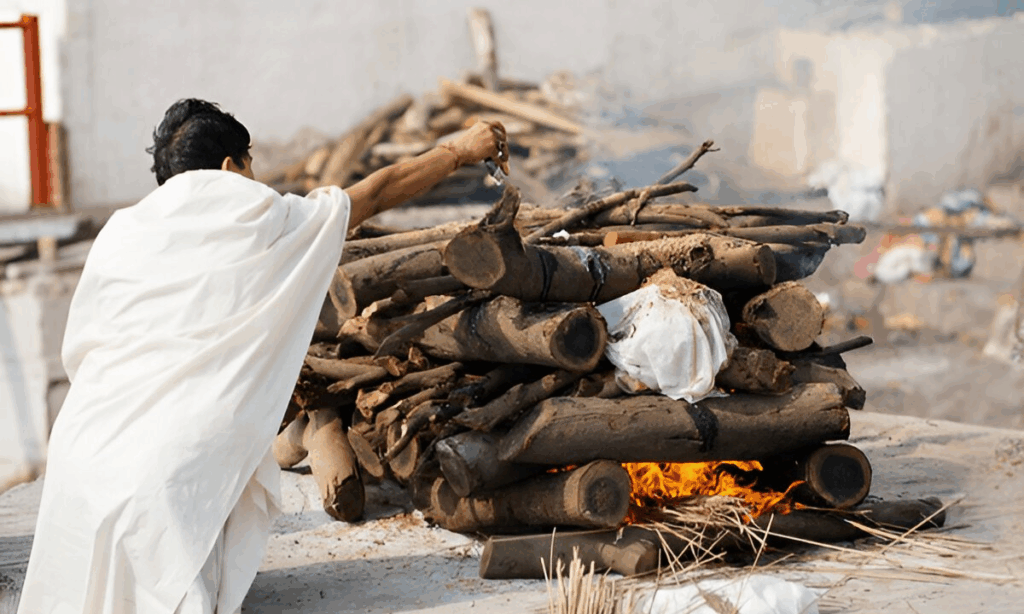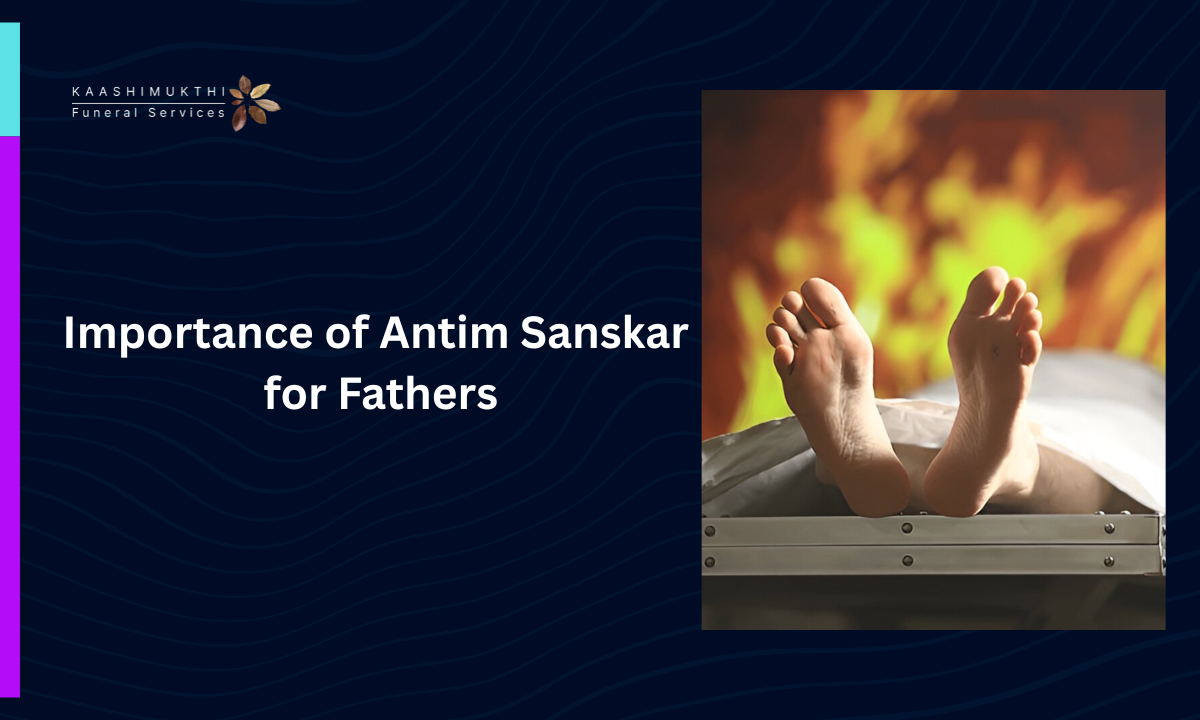Antim Sanskar is the final rite performed after a person’s passing, particularly in Hindu traditions. It signifies the completion of earthly duties and ensures the departed soul’s peaceful journey to the afterlife. Performing Antim Sanskar is not just a ritual but a sacred responsibility for the family.
In today’s world, where urban life is busy, understanding the modern process and significance of these rituals can guide us through this emotional period. Let’s explore why Antim Sanskar is so important, along with how we can approach it with both respect and practicality.
In India, many families rely on funeral services for smooth coordination, from cremation arrangements to ritual guidance, making this challenging time more manageable. Ever wondered why each day after death has a specific ceremony and what they truly mean?
Understanding Antim Sanskar and Its Meaning
The term Antim Sanskar meaning in English is “final rites” or “last sacrament”. It is a blend of ritual, respect, and spiritual belief. These rites are rooted in the idea that a soul detaches from the body and begins its journey towards moksha or liberation. By performing these rituals carefully, we help honour our father’s life and ensure the continuity of spiritual traditions.
Step 1: Immediate Actions After Father’s Demise
The first step is to inform close family, friends, and a funeral director if needed. Modern arrangements often include:
- Contacting a hospital or doctor to certify death
- Arranging transportation of the body to the home or cremation ground
- Preparing necessary documents, like death certificates, digitally
These steps are essential to ensure a smooth process and avoid last-minute complications
Step 2: Cremation and Traditional Practices

In Hindu customs, cremation is the central act of Hindu death rituals. It symbolises the release of the soul from the physical body. Key practices include:
- Lighting the pyre by the eldest son or the closest male relative
- Offering ghee and prayers during the ceremony
- Observing silence and maintaining a solemn atmosphere
At this stage, modern families can book slots at the cremation ground online or coordinate through professional cremation services, which helps in arranging everything.
| Ritual Step | Traditional Meaning | Modern Consideration |
|---|---|---|
| Lighting pyre | Soul liberation | Assistance from the Funeral Director |
| Offerings (ghee, rice) | Respect & prayer | Can be pre-purchased online |
| Cremation ground rituals | Purification | Digital booking & guidance |
Step 3: Asthi Visarjan
After cremation, the ashes (asthi) are collected and later immersed in a holy river or sea, a process called asthi visarjan.
- Symbolises letting go of the body
- Performed by family members with prayers
- Modern guidance can include transport to riverbanks or arranging permits for safe immersion
This step completes the immediate post-cremation obligations and is considered vital for the soul’s peace.
Step 4: Pind Daan
Pind daan is a ritual where rice balls are offered to ancestors. It is believed to help the departed soul attain liberation.
- Usually performed at home or designated shrines
- Conducted with the guidance of a priest
- In modern practice, families can hire a funeral director to coordinate priests, materials, and timings efficiently
Performing pind daan reflects respect and care, and it ensures the soul’s journey continues smoothly.
Step 5: After Death 11th Day Ceremony
The 11th day after death ceremony is called the Ekadashi rituals in some regions.
- Marks the first major post-cremation observance
- Includes prayers, lighting lamps, and offerings
- Modern families may conduct the ceremony at home or at a community hall with assistance from Funeral services in India, ensuring all logistics are handled
Step 6: 12th Day After Death Ceremony
The 12th day after death ceremony focuses on concluding initial mourning rituals.
- Family members gather for prayers and a simple feast
- Observes a period of reflection and remembrance
- Modern guidance can include catering, arranging priests, and sending invites digitally to relatives
This day provides emotional closure and prepares the family for the 13th-day death ceremony.
Step 7: 13th Day Death Ceremony
The 13th-day death ceremony (Tehravin) is crucial in Hindu death rituals.
- Marks the formal end of the mourning period
- Includes Shraddha ceremonies where offerings are made to ancestors
- Modern arrangements often include scheduling priests and ensuring ritual materials are ready.
This ceremony combines tradition and modern practicality, helping the family honour the father fully.
Step 8: Shraddha Ceremony
The Shraddha ceremony is performed to express gratitude and seek blessings for the departed soul.
- Typically conducted with priests reciting sacred mantras
- Offerings include water, rice, and sesame seeds
- Modern families can rely on professional Funeral services in India to organise priests, transport, and ceremonial materials
This ritual ensures both spiritual and emotional closure for the family.
Modern Considerations in Antim Sanskar
In urban India, we have to balance traditional Hindu death ceremonies with practical constraints. Here are a few tips:
Tips for Smooth Antim Sanskar Planning
| Tip | Modern Solution |
|---|---|
| Booking a cremation ground | Online booking portals and coordination with the Funeral Director |
| Gathering relatives | Inviting relatives and distant family through digital means. |
| Ritual materials | Pre-order antim sanskar samagri kits online |
| Transport of ashes | Permission for river or sea immersion obtained in advance |
Using modern services doesn’t dilute tradition; it ensures ceremonies are performed respectfully and efficiently.
Final Thoughts
Performing Antim Sanskar after a father’s demise is both a spiritual duty and an emotional necessity. By combining traditional rituals with modern conveniences, we can honour our loved ones fully while easing practical challenges.
Families now rely on professional funeral services in India to guide them through cremation, Asthi Visarjan, and Shraddha ceremonies with sensitivity and efficiency.
At Kaashimukthi, we understand the delicate balance between tradition and modernity, helping families perform each Hindu death ceremony with respect, accuracy, and care. By observing Antim Sanskar, we ensure that the departed soul is honoured and our own healing process is supported.
FAQs About Antim Sanskar
Q1: What is the main purpose of Antim Sanskar?
A: Antim Sanskar ensures the soul’s peaceful journey after death and helps family members honour the deceased, fulfilling both spiritual and emotional duties.
Q2: Can cremation rituals be done without a priest?
A: Yes, rituals can be conducted by family members, but hiring a priest ensures correct procedures, mantras, and adherence to traditional Hindu death rituals.
Q3: What is Asthi Visarjan?
A: Asthi Visarjan is the immersion of cremated ashes in a holy river or sea, symbolising the soul’s release and the family’s farewell to the departed.
Q4: Why is the 13th-day ceremony important?
A: The 13th-day ceremony formally concludes mourning, includes Shraddha rituals, and provides closure for the family while honouring the soul’s journey.
Q5: How do modern funeral services in India assist?
A: Modern services handle cremation bookings, priests, ritual materials, transport, and digital coordination, reducing stress and ensuring traditions are respected efficiently.

Madhu is an Entrepreneur, a Mentor, a Writer and an Aspiring Car Race Driver. He is Deeply passionate about leveraging Technology and Human Centred Design to make complex care and End of Life Planning easier. With the ultimate aim of Improving the quality of Life in the Twilight years. Madhu is highly educated and Alumni of IIM-Bangalore, Sikkim Manipal University and Bangalore University besides a Rich Industry Experience in the field of Product Management, Design, Supply chain, Finance, Commercial Management and Funeral Services.

